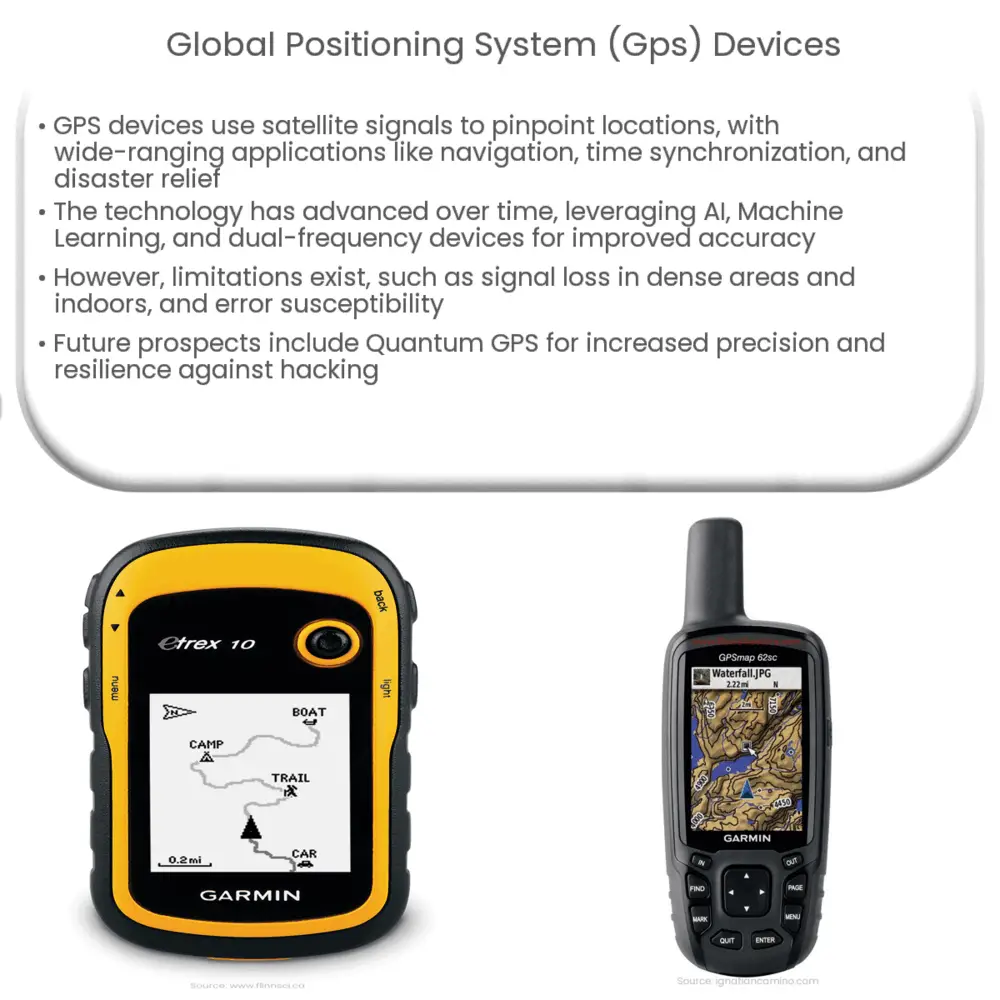Explore the world of Global Positioning System (GPS) devices – their working, advancements, challenges, and future prospects.

A Deep Dive into Global Positioning System (GPS) Devices
The Global Positioning System (GPS), a household term we all are quite familiar with, has revolutionized the world of navigation and tracking. GPS devices have become indispensable tools in today’s tech-driven world. But what exactly is a GPS device? How does it work? Let’s delve into understanding this phenomenal technology.
Understanding GPS: A Brief Overview
The GPS is a satellite-based navigation system made up of a network of 24 satellites placed into orbit by the U.S. Department of Defense. Initially designed for military applications, it was made available for civilian use during the 1980s.
The Working Principle of GPS Devices
The fundamental working principle of GPS involves four primary segments: space, control, user, and signal. The space segment consists of the satellites in space, while the control segment is made up of ground-based control stations that monitor and control these satellites. The user segment includes receivers (like our GPS devices), and the signal segment represents the microwave signal transmitted by the satellites.
GPS devices use a method called trilateration. To determine a user’s precise location, the GPS device must receive signals from at least four satellites. By calculating the time it takes for the signal to travel from the satellite to the receiver, the device can calculate the distance to each satellite and thus determine the user’s exact location.
The Ubiquitous Applications of GPS Devices
From smartphones and cars to drones and shipping containers, GPS devices have found myriad applications. Their utility is not confined to mere location tracking; they have ushered in significant advancements in several sectors.
- Navigation: The most common use of GPS is in navigation systems for cars, boats, and aircraft.
- Time synchronization: GPS provides incredibly accurate time synchronization, used in various sectors like banking, telecommunications, and scientific research.
- Disaster relief and emergency services: GPS is crucial in managing disaster relief and emergency services, aiding in quick location identification and resource allocation.
Indeed, the world as we know it would not function as seamlessly without GPS technology. In the following section, we will continue to explore the fascinating world of GPS, focusing on its advancements, potential limitations, and future prospects.
Advancements in GPS Technology
GPS technology has seen several enhancements since its inception. Dual-frequency GPS devices, for instance, can use multiple signals from a satellite, improving accuracy and reducing errors caused by the ionosphere. Advances in AI and Machine Learning are also being incorporated, improving real-time tracking and predictive analytics.
Limitations and Challenges of GPS Devices
Despite its widespread use and substantial advantages, GPS is not without limitations. Signal loss in dense urban areas, known as urban canyons, is one common issue. Similarly, GPS signals can be hard to pick up in dense forests or deep canyons. Indoor tracking also poses a significant challenge. Moreover, the system is susceptible to errors due to factors such as atmospheric disturbances and clock discrepancies.
The Future of GPS Devices
GPS technology is continually evolving. More countries are launching their own satellite navigation systems, such as Europe’s Galileo and China’s Beidou, increasing the availability and accuracy of global navigation services. The advent of 5G is set to boost the capabilities of GPS devices further, enabling more reliable and quicker communication.
Moreover, advanced technologies like Quantum GPS are on the horizon, promising to deliver unparalleled precision and making the technology immune to jamming or hacking. In essence, the future holds incredible prospects for GPS technology.
Conclusion
In summary, Global Positioning System (GPS) devices have dramatically transformed how we navigate and interact with the world around us. While they have their limitations, the ongoing advancements promise to alleviate these challenges, leading to even greater accuracy and wider applications. As we continue to innovate and push the boundaries of what is possible, GPS devices will undoubtedly continue to be an integral part of our technological landscape, bringing the world closer together and making it a more connected place.

